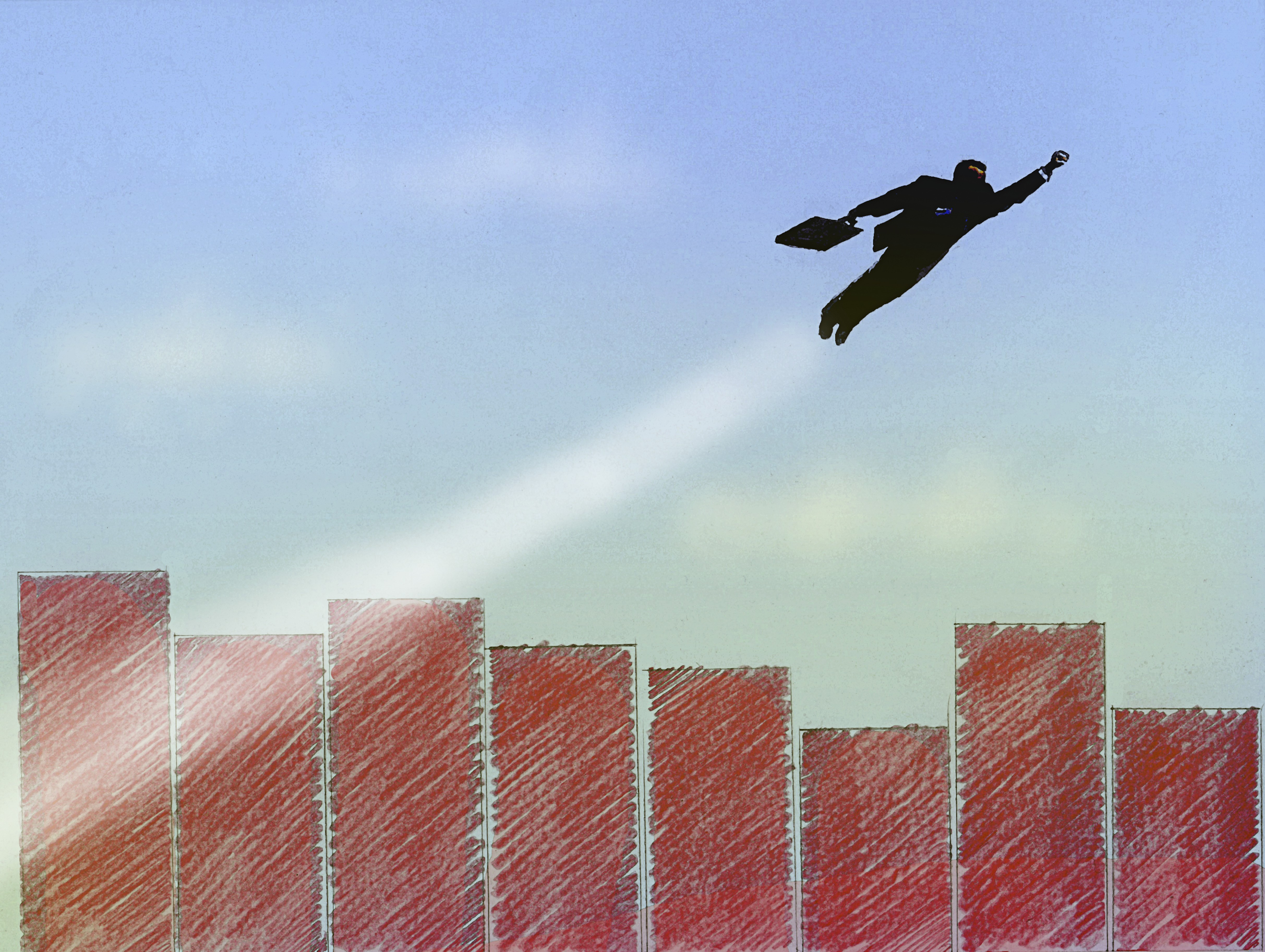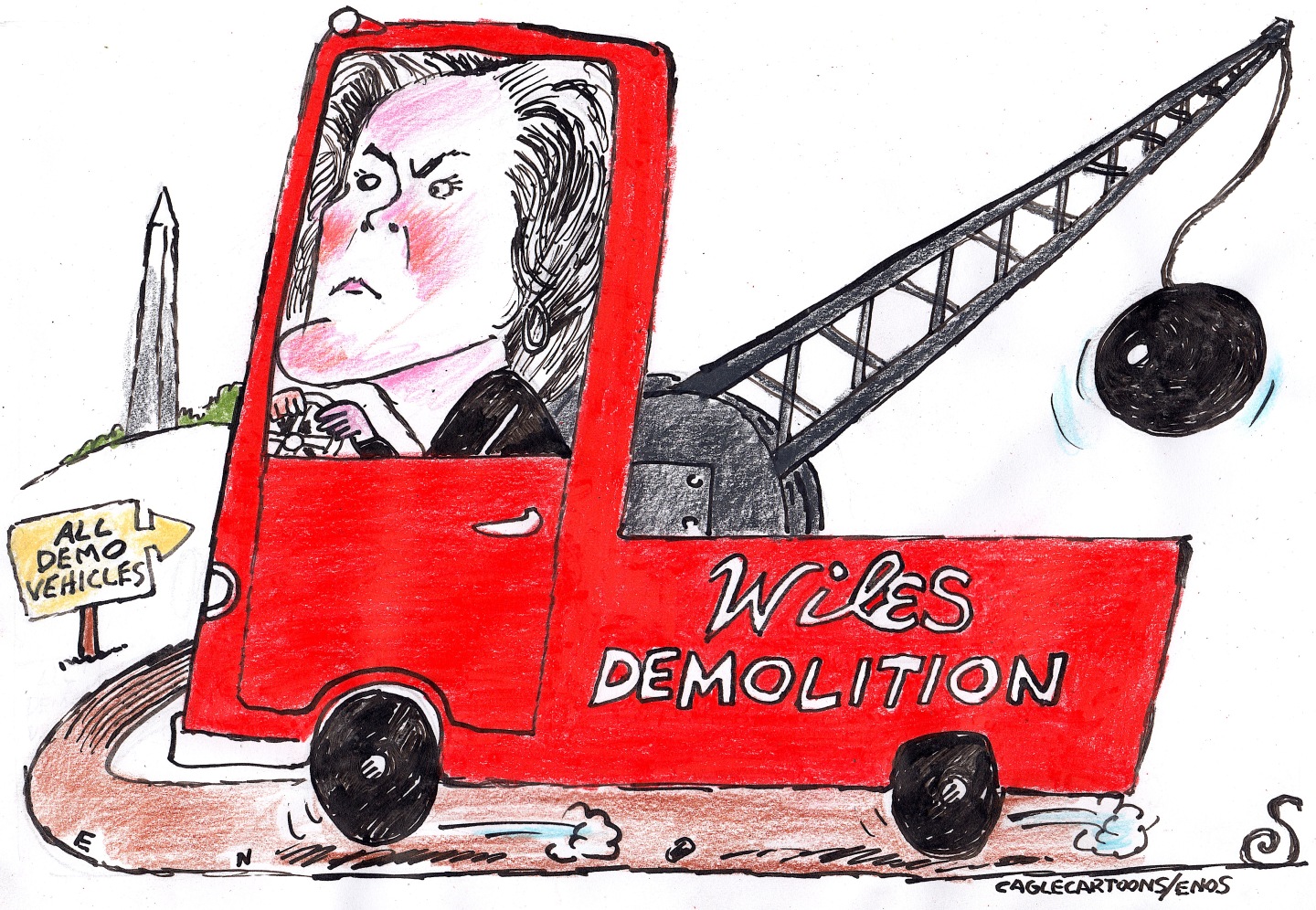Superdelegates, explained
Everything you need to know about the Democratic powerbrokers who may decide the 2016 election

By just about any measure, Hillary Clinton leads Bernie Sanders in the race for the Democratic presidential nomination. But it's only when you count her superdelegates that the lead looks positively insurmountable.
The Democrats have so far held 35 nominating contests. Clinton has won 20 of them, and Sanders 15.
A Democratic candidate needs 2,383 total delegates to secure the nomination. Clinton has 1,243 pledged delegates to Sanders' 980.
The Week
Escape your echo chamber. Get the facts behind the news, plus analysis from multiple perspectives.

Sign up for The Week's Free Newsletters
From our morning news briefing to a weekly Good News Newsletter, get the best of The Week delivered directly to your inbox.
From our morning news briefing to a weekly Good News Newsletter, get the best of The Week delivered directly to your inbox.
But then there's the superdelegates. Clinton has the declared support of 469 of them. Sanders has a meager 31.
These superdelegates are not bound to follow the will of the voters, nor are they required to stay true to the candidate they've pledged to support. But they may well decide the Democratic race. It's certainly possible, and perhaps even likely, that neither Clinton nor Sanders will get to 2,383 without superdelegates.
So who are these superdelegates, and how does their power work? Here's what you need to know:
Who gets to be a superdelegate?
A free daily email with the biggest news stories of the day – and the best features from TheWeek.com
A superdelegate is typically an elite member of the Democratic Party falling into one of three categories:
1. A major elected official, including senators, members of the House, governors, and leaders from each state's Democratic Party. For example, New York Gov. Andrew Cuomo and Massachusetts Sen. Elizabeth Warren are superdelegates.
2. A notable party figure, such as former and current presidents and vice presidents. For example, former President Bill Clinton and Vice President Joe Biden are superdelegates.
3. Select leaders of organizations affiliated with the Democratic National Committee. These select party elders get their superdelegate status automatically by virtue of the fact that they've been elected to public office. For example, DNC Chair Debbie Wasserman Schultz and Louis Elrod of Young Democrats of America are superdelegates.
How many Democratic superdelegates are there?
712. They control about 15 percent of the nominating process. The remaining 85 percent is controlled by delegates apportioned by the results of primaries and caucuses.
How are superdelegates different from regular delegates?
Superdelegates are free to support whichever candidate they choose, even if that candidate is not the voters' pick. As for normal delegates: Each state has a different system for selecting who they'll send to the convention as a delegate. But unlike superdelegates, delegates are allotted to candidates in proportion to their share of the vote in the state's primary or caucus and are then pledged to vote for that candidate.
Why do we have superdelegates in the first place?
For most of the Democratic Party's history, party elders picked the nominee. It was only in recent decades that the Democratic Party began experimenting with the idea of opening up the nomination process to give voters more of a say in choosing the nominee.
Democrats began using primaries and caucuses to select pledged delegates in 1972. In that election, Democrats ended up with a nominee — Sen. George McGovern — who was absolutely destroyed in the general election: Richard Nixon carried 49 states to McGovern's one.
In 1976, Democrats ended up with yet another nominee — Jimmy Carter — who didn't do particularly well on the national stage. While Carter eked out a victory in the 1976 election in the wake of the Republican administration's disastrous Watergate scandal, he was steamrolled by Ronald Reagan in 1980, with Reagan winning 44 states to Carter's six.
Party elites saw "a need for there to be a voice for the establishment within the party to not necessarily overturn the will of the voters, but to nudge along a nominee who would be well equipped to win during the general election — to avoid nominees like George McGovern and Jimmy Carter," University of Georgia political science professor Josh Putnam told CBS News.
The resulting solution, settled upon in the early 1980s, was a superdelegate system in which party elites could put their thumbs on the scale. The New York Times reports that party elders claimed it "created a more stable and predictable nominating process that favors mainstream candidates and policies."
Isn't the Democratic Party's superdelegate process undemocratic?
That's what critics argue. But the Democratic Party maintains that, as "open" and "democratic" as it may sound to to put the choice entirely in the hands of voters, the results aren't so hot. As The Washington Post points out, Democratic voters do not get better representation when their party's nominee gets decimated by a Republican, as happened just before the party's adoption of superdelegates. Superdelegates are meant to be a pragmatic check on desires of voters.
So, how does this all factor into 2016?
The reason people are up in arms about the Democratic Party's superdelegate system is all about the chasm between the opinions of Democratic voters and that of party elites in this election. While Sen. Bernie Sanders (I-Vt.) and Hillary Clinton are relatively close in their respective delegate counts and in national polling, Clinton is absolutely crushing Sanders among superdelegates.
But, as The Washington Post notes, Sanders supporters' complaints aren't out of the ordinary: "[D]uring years when [superdelegates have] seemed poised to swing a nomination battle — in 1984 and 2008 — disadvantaged factions have been quick to cry foul." Everything old, it seems, is new again.
-
 Political cartoons for December 20
Political cartoons for December 20Cartoons Saturday’s political cartoons include drowning rats, the ACA, and more
-
 5 fairly vain cartoons about Vanity Fair’s interviews with Susie Wiles
5 fairly vain cartoons about Vanity Fair’s interviews with Susie WilesCartoon Artists take on demolition derby, alcoholic personality, and more
-
 Joanna Trollope: novelist who had a No. 1 bestseller with The Rector’s Wife
Joanna Trollope: novelist who had a No. 1 bestseller with The Rector’s WifeIn the Spotlight Trollope found fame with intelligent novels about the dramas and dilemmas of modern women
-
 Has Zohran Mamdani shown the Democrats how to win again?
Has Zohran Mamdani shown the Democrats how to win again?Today’s Big Question New York City mayoral election touted as victory for left-wing populists but moderate centrist wins elsewhere present more complex path for Democratic Party
-
 Millions turn out for anti-Trump ‘No Kings’ rallies
Millions turn out for anti-Trump ‘No Kings’ ralliesSpeed Read An estimated 7 million people participated, 2 million more than at the first ‘No Kings’ protest in June
-
 Ghislaine Maxwell: angling for a Trump pardon
Ghislaine Maxwell: angling for a Trump pardonTalking Point Convicted sex trafficker's testimony could shed new light on president's links to Jeffrey Epstein
-
 The last words and final moments of 40 presidents
The last words and final moments of 40 presidentsThe Explainer Some are eloquent quotes worthy of the holders of the highest office in the nation, and others... aren't
-
 The JFK files: the truth at last?
The JFK files: the truth at last?In The Spotlight More than 64,000 previously classified documents relating the 1963 assassination of John F. Kennedy have been released by the Trump administration
-
 'Seriously, not literally': how should the world take Donald Trump?
'Seriously, not literally': how should the world take Donald Trump?Today's big question White House rhetoric and reality look likely to become increasingly blurred
-
 Will Trump's 'madman' strategy pay off?
Will Trump's 'madman' strategy pay off?Today's Big Question Incoming US president likes to seem unpredictable but, this time round, world leaders could be wise to his playbook
-
 Democrats vs. Republicans: who are US billionaires backing?
Democrats vs. Republicans: who are US billionaires backing?The Explainer Younger tech titans join 'boys' club throwing money and support' behind President Trump, while older plutocrats quietly rebuke new administration